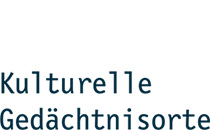The so called “Blaubuch” is the result of a study that has evaluated and merged all nationally important places of cultural heritage in the East German federal states. This was made possible on the initiative of the representative of the German government for culture and media and was published in 2001 for the first time. The places are subdivided into “cultural lighthouses” and “cultural memorial places”. The “lighthouses” are museums and institutions that with their buildings, ensembles, collections, their subject or activities are internationally perceived as places of the German cultural heritage. The “memorial places” on the other hand are museums, archives or memorials dedicated to important persons of the national cultural heritage. The up to now 23 “cultural lighthouses” are united in the conference of national cultural institutions (KNK) and the so far 22 “cultural memorial places” work together in the symposium of the cultural memorial places (KGO).
The fundamental idea of the “Blaubuch” is to make the East German cultural heritage recognizable and to emphasize its importance for the German and European heritage. Until now it has been published three times with small changes: 2001, 2002/03 and 2006.



